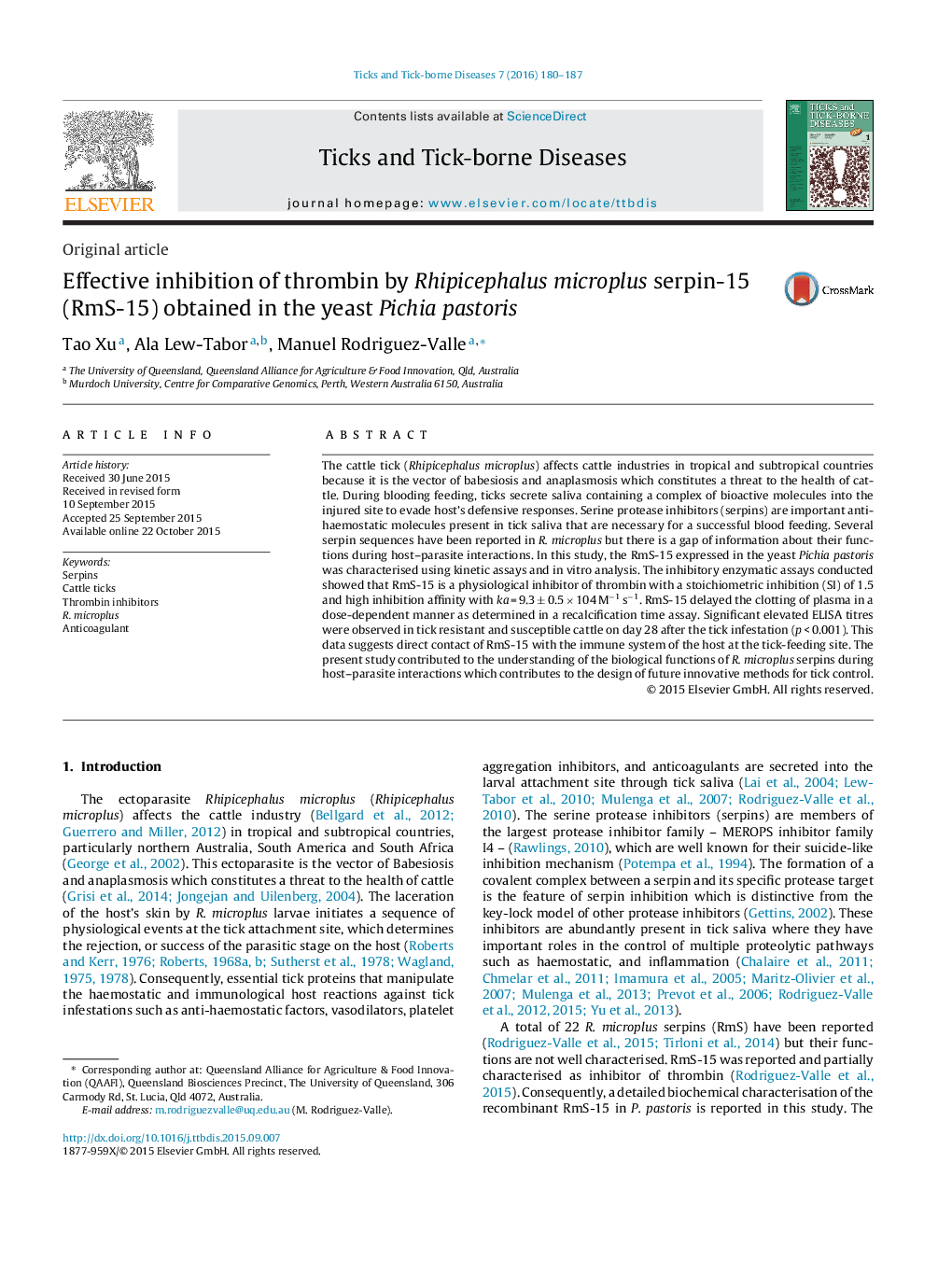| Article ID | Journal | Published Year | Pages | File Type |
|---|---|---|---|---|
| 5807044 | Ticks and Tick-borne Diseases | 2016 | 8 Pages |
Abstract
The cattle tick (Rhipicephalus microplus) affects cattle industries in tropical and subtropical countries because it is the vector of babesiosis and anaplasmosis which constitutes a threat to the health of cattle. During blooding feeding, ticks secrete saliva containing a complex of bioactive molecules into the injured site to evade host's defensive responses. Serine protease inhibitors (serpins) are important anti-haemostatic molecules present in tick saliva that are necessary for a successful blood feeding. Several serpin sequences have been reported in R. microplus but there is a gap of information about their functions during host-parasite interactions. In this study, the RmS-15 expressed in the yeast Pichia pastoris was characterised using kinetic assays and in vitro analysis. The inhibitory enzymatic assays conducted showed that RmS-15 is a physiological inhibitor of thrombin with a stoichiometric inhibition (SI) of 1.5 and high inhibition affinity with ka = 9.3 ± 0.5 Ã 104 Mâ1 sâ1. RmS-15 delayed the clotting of plasma in a dose-dependent manner as determined in a recalcification time assay. Significant elevated ELISA titres were observed in tick resistant and susceptible cattle on day 28 after the tick infestation (p < 0.001). This data suggests direct contact of RmS-15 with the immune system of the host at the tick-feeding site. The present study contributed to the understanding of the biological functions of R. microplus serpins during host-parasite interactions which contributes to the design of future innovative methods for tick control.
Related Topics
Life Sciences
Agricultural and Biological Sciences
Animal Science and Zoology
Authors
Tao Xu, Ala Lew-Tabor, Manuel Rodriguez-Valle,
